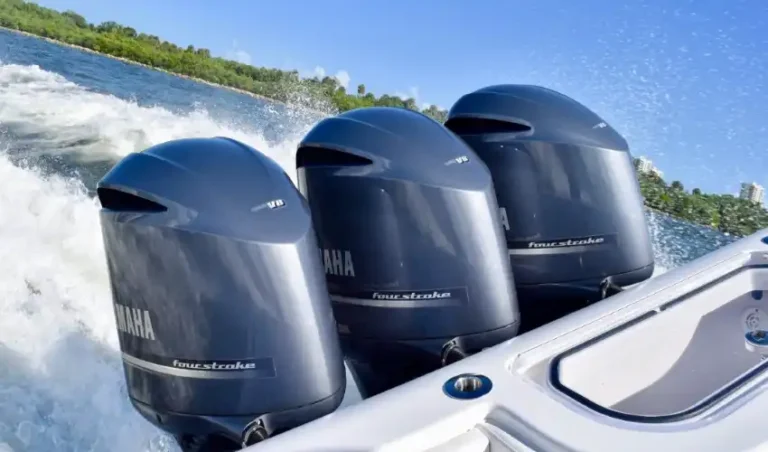Your outboard motor is the heart of your boat. Proper maintenance not only ensures peak performance but also extends its lifespan, saves you money on repairs, and keeps your adventures on the water trouble-free. Whether you’re a weekend boater or a seasoned angler, understanding how to care for your outboard motor is essential. This step-by-step guide will walk you through all the important maintenance tasks to keep your engine running smoothly.
Why Outboard Motor Maintenance Matters
Outboard motors operate in tough conditions — saltwater exposure, high RPMs, and long idle times can take a toll. Routine maintenance helps prevent corrosion, improves fuel efficiency, and reduces the risk of unexpected breakdowns. Regular care can also help retain your motor’s resale value.
Step 1: Read the Owner’s Manual
Every outboard motor is different. The first step in proper maintenance is to consult your owner’s manual. It will outline manufacturer-recommended service intervals, oil types, spark plug specifications, and torque values. Following these guidelines will ensure you don’t void your warranty and are using the correct parts and procedures.
Step 2: Flush the Engine After Every Use
Saltwater and debris can cause corrosion and clog your cooling system. After every outing, flush your motor with fresh water. Here’s how:
- Attach a hose to the motor’s flushing port.
- Start the engine and let it run for 5-10 minutes.
- Turn off the engine and remove the hose.
Make sure water flows freely from the telltale (pee hole) to ensure the cooling system is working properly.
Step 3: Inspect and Change the Engine Oil
For 4-stroke outboard motors for sale, changing the engine oil regularly is crucial. Do this every 100 hours of operation or at least once per season.
Steps:
- Warm up the engine to thin the oil.
- Remove the drain plug and let the oil drain completely.
- Replace the oil filter.
- Refill with manufacturer-recommended oil.
Be sure to dispose of used oil responsibly at a recycling center.
Step 4: Replace the Gearcase (Lower Unit) Oil
Your motor’s lower unit needs attention too. Gearcase oil should be replaced every 100 hours or annually.
Steps:
- Remove the bottom drain plug and the top vent plug.
- Let the old oil drain out completely.
- Fill from the bottom until oil seeps out the top vent.
- Reinstall both plugs securely.
Check for milky oil, which indicates water intrusion and may require a professional inspection.
Step 5: Check and Replace Spark Plugs
Spark plugs are essential for engine performance. Worn or dirty plugs can cause misfires or poor fuel economy.
- Inspect plugs every 100 hours or seasonally.
- Replace if fouled, corroded, or worn.
- Use plugs recommended by the manufacturer.
- Always check and set the correct gap before installation.
Step 6: Inspect the Propeller
A damaged propeller can reduce performance and fuel efficiency. Inspect your prop regularly for dents, cracks, or fishing line wrapped around the shaft.
- Remove the propeller.
- Clean and grease the shaft.
- Replace any damaged parts.
- Reinstall and tighten the propeller nut securely.
Step 7: Monitor Fuel System Components
Fuel degradation is a major cause of engine issues. To avoid problems:
- Use a fuel stabilizer, especially during long storage.
- Inspect fuel lines for cracks or leaks.
- Replace fuel filters annually.
- Drain the fuel tank or use fresh fuel if it’s been sitting for a while.
Step 8: Maintain the Cooling System
Overheating is a common cause of outboard failure. Prevent it by checking:
- The water pump impeller — replace every 2-3 years.
- Thermostats — inspect and replace if faulty.
- The telltale stream — ensure water is flowing freely.
If your motor overheats or water flow is weak, stop running it immediately and investigate.
Step 9: Inspect Electrical Connections
Moisture and salt can corrode your motor’s electrical system.
- Check battery terminals for corrosion.
- Ensure wiring is intact and secure.
- Clean and grease connections using dielectric grease.
Test your battery regularly and keep it fully charged.
Step 10: Prepare for Storage
If you’re storing your motor for more than a month:
- Add fuel stabilizer and run the engine to circulate it.
- Fog the cylinders with fogging oil to prevent corrosion.
- Drain and replace fluids.
- Store in an upright position in a dry, covered area.
Proper winterization prevents damage and ensures an easy startup in spring.
Final Tips for Outboard Motor Care
- Perform a full inspection before each trip.
- Keep a log of maintenance tasks and engine hours.
- Don’t ignore warning lights or performance issues.
- Schedule annual professional service for a thorough checkup.
Conclusion
Routine maintenance is the key to keeping your outboard motor reliable and efficient. By following these simple steps, you’ll enjoy worry-free boating and protect your investment for years to come. Whether you’re cruising the coast or fishing inland waters, a well-maintained motor ensures you spend more time on the water and less time in the shop.
